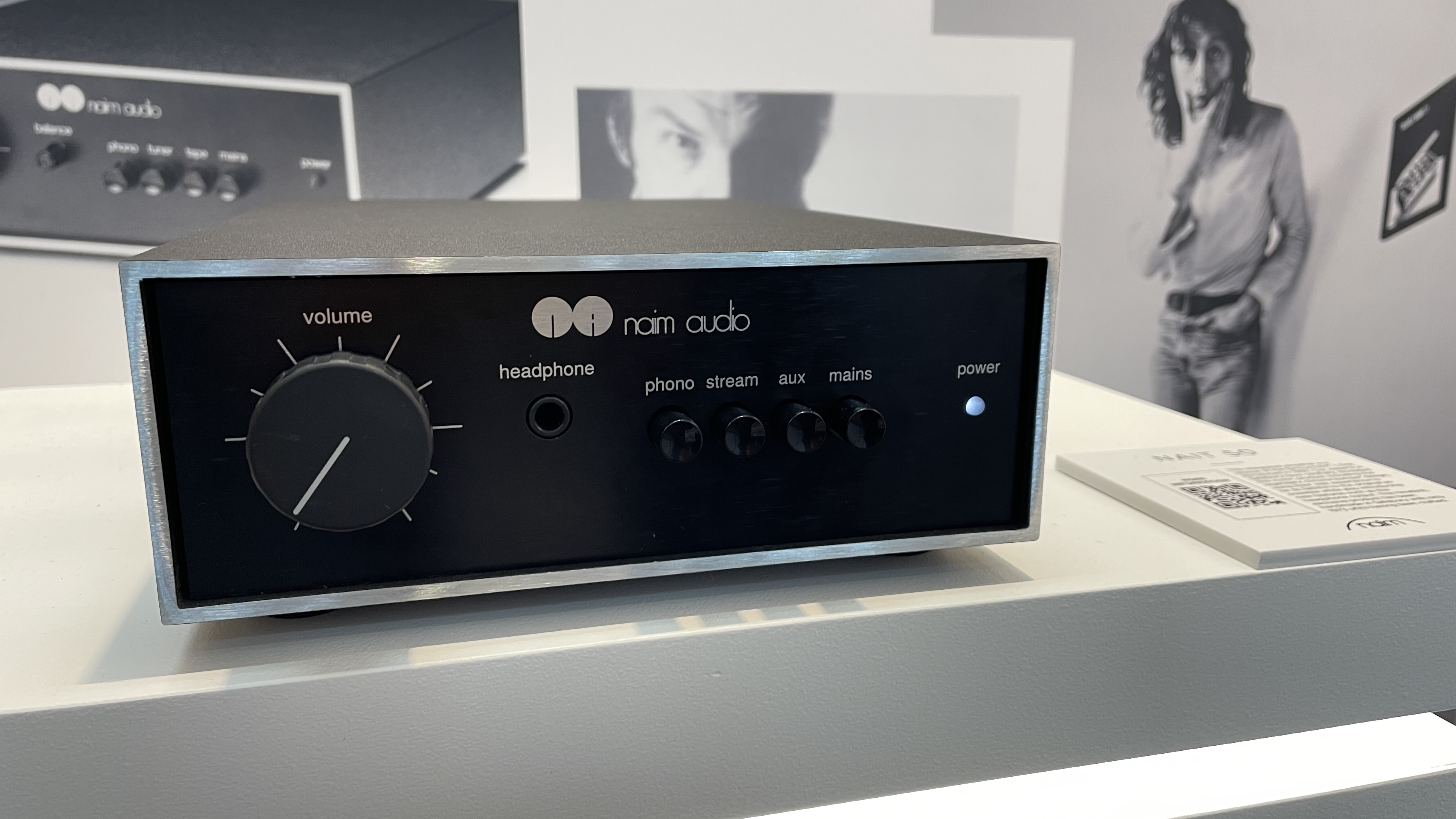Naim's purist approach to the Nait 50 is a breath of fresh air for hi-fi
Naim’s new re-imagining of the Nait 1 has left me reminiscing about a simpler time in hi-fi

This week Naim launched a special edition Nait 50 amp to celebrate its 50th anniversary.
To catch up readers who missed the news, the Nait 50 is a “modernised” version of the Nait 1 integrated amplifier, which was first released all the way back in 1983.
And while there have been plenty of heavy-hitting anniversary releases already this year – Rega’s 50th Anniversary Edition of the Planar 3, the reworked 30th edition B&W Nautilus speakers, and Bluesound 10th anniversary Node X update to name a few – I can’t help but feel the new Nait 50 is particularly special for a couple of reasons.
The first reason is a simple one that I’ve been screaming about for ages – the Nait 50 is a wonderfully compact piece of hi-fi, which is a rarity these days. Our managing editor Becky Roberts expertly made the point last Christmas that we need more “good”, but small hi-fi this year.
I later followed suit, when I got an opening look at Cambridge Audio’s dinky MXX10 streamer in February. The reasoning here is simple; many of us, especially those living in flats or shared accommodations don’t have the space for large racks, which kind of leaves us up the creek without a paddle if we want to use separates. Having regularly pursued the What Hi-Fi? forum and our social media channels, I know this is an issue for a lot of our readers as well.
So in a world where half-width design amps are increasingly rare, the compact 8.7 x 20.7 x 32.1cm Nait 50 automatically drew my eye and attention. This in fairness was helped by the fact that, based on the press shots I’ve seen, the Nait 50’s aluminium chassis and chrome bumper styling make it look rather swish.

The second, and in my mind more important, reason I’m excited is that it’s a wonderfully focused, almost purist, product with a simple goal to do one thing right and that’s it.
The latest hi-fi, home cinema and tech news, reviews, buying advice and deals, direct to your inbox.
I’m not the first What Hi-Fi? staffer to lament the current trend in hi-fi for brands to try and stuff too much hardware or functionality into every product they make. Our technical editor and resident hi-fi sage, Ketan Bharadia, made this point expertly in his last Mutterings From The Test Room column, where he explained why less is often more with a DAC.
The cliff notes are that, having reviewed the wonderfully no-nonsense TAD DA1000TX, he lamented DAC manufacturers' desire to offer a large range of digital filter options. While this sounds odd, the reasoning is that the effort usually results in a fair amount of faff for the end user, with them having to tinker with the DAC to get the best audio. As a result, it’d be far better if the engineers purely focussed on offering the flavour of sound they like the best, freeing the listener up to just enjoy their music from the get-go.
Though it’s not like-for-like with the two product categories, I agree that sometimes it’s better for a product to do one thing well than five things half-heartedly – and that’s exactly what the Nait 50 appears to want to do. Much like the Rega Brio, to give one other example of purity.
Unlike many of the amps we review, if you check the Nait 50’s purist specifications, you’ll notice there’s no digital-to-analogue converter (DAC) or wireless functionality to be seen, with Naim directly instructing buyers to pair it with an outboard DAC or DAC/streamer if they want to play music that way. There are simply DIN and phono inputs, plus a very modest 25 watts of power per channel into 8 ohms – which, let's face it, is all many hi-fi owners will need anyway.
This is a very rare and in my mind bold move by Naim in today’s market where pretty much everyone is adding this functionality to their integrated amps. Even Rega joined the party with its higher-end Elicit MK5 this year – which was unveiled in April and is the first Rega amplifier to use a dedicated DAC circuit designed by the company.
Likewise, Mission seemed to feel obliged to offer modern connectivity – including Bluetooth – when it launched its updated classic 778, the Mission 778x. And that's fine and certainly fills a gap in the market as something compact, affordable and conveniently equipped with mod cons.
To be clear I have no issue with adding all this to an amp if it’s done right. Jump over to our best stereo amps guide and you’ll see plenty of examples of top performers with it. I also can’t make any definitive claims about whether the move’s paid off until What Hi-Fi? gets a Nait 50 into its listening rooms and actually tests it.
But, in my heart of hearts, I can’t help but feel a twinge of respect for the brand’s willingness to release such a focused and compact product.
MORE:
The best stereo amps we’ve reviewed revealed
Check our picks of the best music streamers
These are the best speakers we've tried and tested

Alastair is What Hi-Fi?’s editor in chief. He has well over a decade’s experience as a journalist working in both B2C and B2B press. During this time he’s covered everything from the launch of the first Amazon Echo to government cyber security policy. Prior to joining What Hi-Fi? he served as Trusted Reviews’ editor-in-chief. Outside of tech, he has a Masters from King’s College London in Ethics and the Philosophy of Religion, is an enthusiastic, but untalented, guitar player and runs a webcomic in his spare time.
